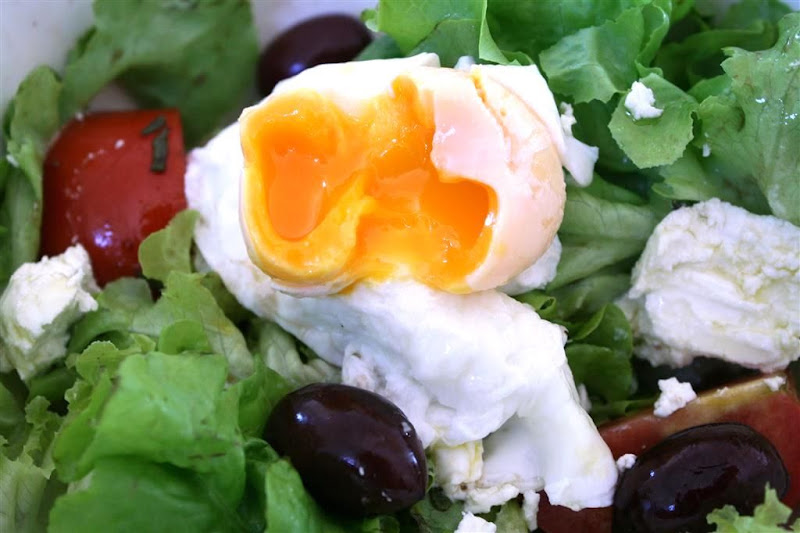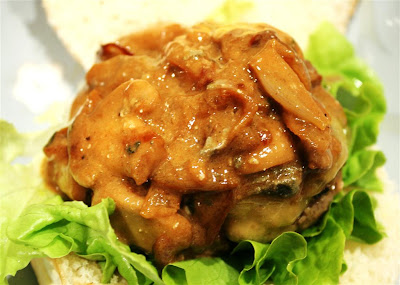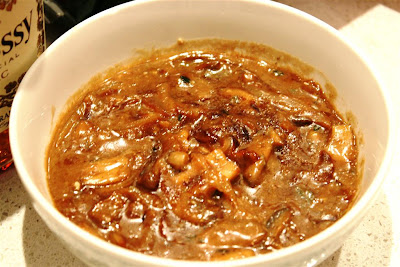The Daring Cooks Challenge for January was hosted by Cuppy of
Cuppylicious. The recipe she choose was a Thai-inspired Pork Satay from the book 1000 Recipes by Martha Day. The focus of the challenge was with marinating the meat. There was a long and short version for marinating, and I choose to do the long version. Here are the guideliness she set for the challenge:
- Use any meat or tofu you like.
- Serve satay as an appetizer, side dish or main course.
- Skewer or no skewer, your call.
- Pan fry, grill, or broil, also your call.
- Alternative recipe below for faster marinade.
- Alternative recipe below for peanut allergies.
- You don’t have to use turmeric if you don’t have it. In the case of satay, turmeric just makes it yellow. Har har.
- Marinate (verb) – to steep (to wet thoroughly in or with a liquid; drench; saturate; imbue) in a marinade before cooking.
The required part of this challenge is to marinate. Marinades serve two purposes, to: 1) add awesome flavor and 2) tenderize tougher meats.
What I like to do is take tougher (cheaper!) cuts of meat and marinate them to make them soft and tender. The tougher the meat, the cheaper it seems to be. Think of it as “what part of the animal gets the most exercise?” and you’ll know which parts are the tough (cheaper!) cuts. Anything from the back and belly tends to be pretty tender already, as it gets very little exercise on the animal (haha… I just patted my own belly thinking about that!).
Meat cuts:
http://www.specialtyfoods.com.au/cuts.html
The key to a great marinade is to have an acid (lemon, lime, brine, soy, vinegar, etc) and an oil (peanut, vegetable, corn, olive, etc). If you’re already working with a soft meat (filet mignon) or vegetable (capsicum) or tofu, then you can skip the oil entirely. Potatoes and tofu still need to be marinated for flavor, otherwise you may as well dip French fries in catsup. If you're going to grill, I suggest you include the oil anyway.
Marinade Info:
http://www.bbqrecipesecrets.com/marinades.html
Things you’ll need for the long version:
Sharp knife
Cutting board
Food processor (optional)
Juicer (optional)
Medium bowl w/ lid or plastic wrap (or ziplock bag)
I used Pork Neck instead of the recommended shoulder or loin cuts. Just because I happen to have about 300g of it left in my freezer. Also I guess fattier pork equals yummier satays.. :)

Pork Satay with Peanut Sauce
Satay Marinade
- 1/2 small onion, chopped
- 2 garlic cloves, crushed
- 1 T ginger root, chopped (optional) (2 cm cubed)
- 2 T lemon juice (1 oz or 30 mls)
- 1 T soy sauce (0.5 oz or 15 mls)
- 1 tsp ground coriander (5 mls)
- 1 tsp ground cumin (5 mls)
- 1/2 tsp ground turmeric (2-2.5 mls)
- 2 T vegetable oil (or peanut or olive oil) (30 mls)
- 1 pound of pork (loin or shoulder cuts) (16 oz or 450g)
Feeling the need to make it more Thai? Try adding a dragon chili, an extra tablespoon of ginger root, and 1 tablespoon (0.5 oz or 15 mls) of fish sauce. (I keep some premature (still green) dragon chili peppers in the freezer for just such an occasion.)
Directions:
Cheater alert: If you have a food processor or blender, dump in everything except the pork and blend until smooth. Lacking a food processor, I prefer to chop my onions, garlic and ginger really fine then mix it all together in a medium to large bowl.
Cut pork into 1 inch strips.
Cover pork with marinade. You can place the pork into a bowl, cover/seal and chill, or place the whole lot of it into a ziplock bag, seal and chill.
Cooking Directions (continued): If using wooden or bamboo skewers, soak your skewers in warm water for at least 20 minutes before preparing skewers.
Gently and slowly slide meat strips onto skewers. Discard leftover marinade.*
Broil or grill at 290°C/550° F (or pan fry on medium-high) for 8-10 minutes or until the edges just start to char. Flip and cook another 8-10 minutes.
* If you’re grilling or broiling, you could definitely brush once with extra marinade when you flip the skewers.

Peanut Sauce
- 3/4 cup coconut milk (6 oz or 180 mls)
- 4 Tbsp peanut butter (2 oz or 60 mls) **
- 1 Tbsp lemon juice (0.5 oz or 15 mls)
- 1 Tbsp soy sauce (0.5 oz or 15 mls)
- 1 tsp brown sugar (5 mls)
- 1/2 tsp ground cumin (2.5 mls)
- 1/2 tsp ground coriander (2.5 mls)
- 1-2 dried red chilies, chopped (keep the seeds for heat)
** I didn't have any peanut butter, so added in a handful of crushed peanuts instead.
- Mix dry ingredients in a small bowl. Add soy sauce and lemon, mix well.
- Over low heat, combine coconut milk, peanut butter and your soy-lemon-seasoning mix. Mix well, stir often.
- All you’re doing is melting the peanut butter, so make your peanut sauce after you’ve made everything else in your meal, or make ahead of time and reheat.
Pepper Dip (optional)- 4 tablespoon soy sauce (2 oz or 60 mls)
- 1 tablespoon lemon juice (0.5 oz or 15 mls)
- 1 teaspoon brown sugar (5 mls)
- 1-2 dried red chilies, chopped (keep the seeds for heat)
- 1 finely chopped green onion (scallion)
Mix well. Serve chilled or room temperature.
Tamarind Dip (optional)- 4 tablespoon tamarind paste (helpful link below) (2 oz or 60 mls)
- 1 tablespoon soy sauce (0.5 oz or 15 mls)
- 1 clove of garlic, minced
- 1 finely chopped green onion (scallion)
- 1 teaspoon brown or white sugar, or to taste (about 5 mls)
Mix well. Serve chilled or room temperature.
Thank you Cuppy for the challenge !



